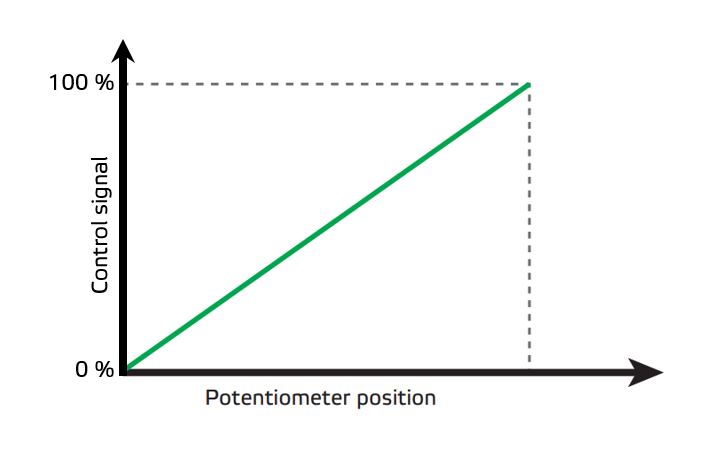What is a potentiometer?
A potentiometer is a device to generate a control signal.
A potentiometer is an electronic component that allows you to vary the resistance in a circuit. It consists of a resistor with a movable contact, called a wiper, which can be adjusted to change the resistance value of the circuit. The potentiometer has three terminals: the two outer terminals are connected to the ends of the resistor, and the middle terminal is connected to the wiper. When the potentiometer is turned, the wiper moves along the resistor, changing the length of the resistive element between the wiper and one of the outer terminals, while the resistance between the wiper and the other outer terminal decreases correspondingly. By adjusting the position of the wiper, you can vary the resistance of the potentiometer, which in turn can control the current or voltage in the circuit.
In HVAC industry, a potentiometer is understood to mean a device that is used to manually generate a control signal. Typical control signals are: 0-10 Volt, 0-20 mA or 0-100 % PWM. These continuous variable control signals (or analogue signals) can be used to control an EC fan or an AC fan via a frequency inverter or via a variable speed drive. A control signal can also be used to control a damper actuator, etc.

In simple words, this means that a potentiometer can be used to manually adjust fan speed or to control a damper position. A potentiometer is often installed on an easy accessible location to remotely control fan speed or to regulate air flow by adjusting a damper position.
Some potentiometers require a supply voltage, while other types are unpowered.
Potentiometers are available in different enclosures. Most potentiometers can be surface mounted or flush mounted.
Most potentiometers generate a continuous variable output signal, but we also offer control switches that generate a 0-10 Volt signal in 3 adjustable steps. E.g. position 1 = 4 Volt, position 2 = 7 Volt and position 3 = 10 Volt.
